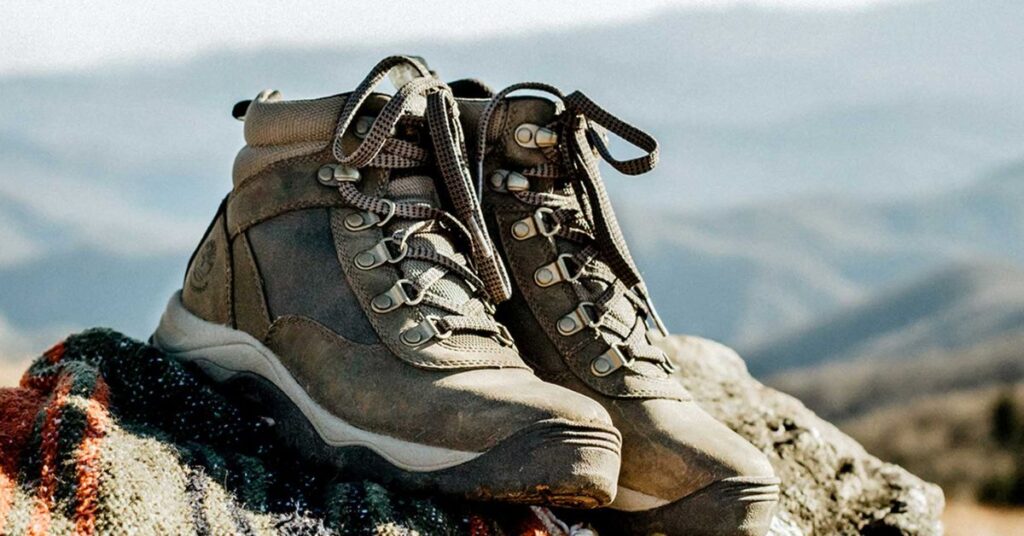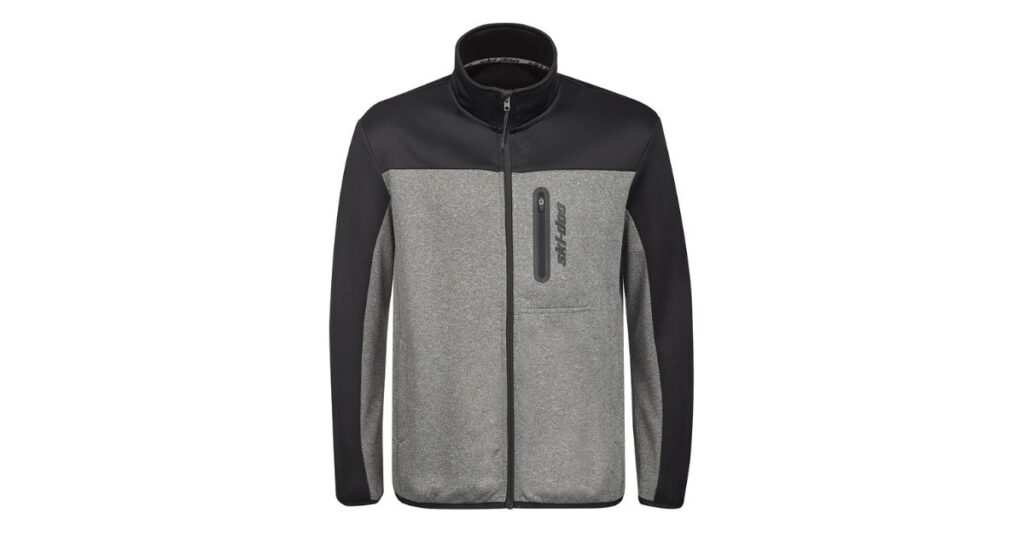Are you ready to embark on a thrilling hiking adventure but are unsure about what to wear? Choosing the right hiking attire can make all the difference between a comfortable, enjoyable experience and a miserable, uncomfortable one.
In this comprehensive guide, we’ll explore the essential clothing items and layering techniques that will keep you prepared for any weather conditions you may encounter during your hike. From moisture-wicking base layers to waterproof outer shells, we’ll cover all the necessary components to create the perfect hiking outfit.
By the end of this article, you’ll have a clear understanding of what to wear for hiking, enabling you to confidently hit the trails and fully immerse yourself in the beauty of nature. So, let’s dive in and discover the secrets to dressing for hiking success!
Got it! I’ll keep this information in mind.
By the end of this guide, you’ll have a comprehensive understanding of how to dress appropriately for a day hike, allowing you to focus on the breathtaking views and memorable experiences that await you on the trail.
Choosing the Right Footwear

The Foundation of Your Hiking Outfit
Your choice of footwear is the foundation of your hiking outfit. Selecting the right shoes or boots is crucial for maintaining comfort, stability, and protection on the trail. When choosing hiking footwear, consider factors such as the terrain, weather conditions, and the duration of your hike.
Read More: Savoring Europe: A Culinary Journey with Intrepidfood.eu
Hiking Shoes vs. Hiking Boots
Hiking shoes are lightweight and flexible, making them ideal for shorter hikes on well-maintained trails. They provide good traction and support while allowing your feet to breathe. On the other hand, hiking boots offer more ankle support and are suitable for longer hikes or more challenging terrain. They provide better protection against rocks, roots, and other obstacles.
Ensuring a Proper Fit
Regardless of your choice between hiking shoes or boots, ensuring a proper fit is essential. Your footwear should be snug but not tight, allowing enough room for your toes to move. Consider trying on hiking footwear later in the day when your feet are slightly swollen to mimic the conditions you’ll experience on the trail.
The Importance of a Breathable Base Layer
Moisture Management
A breathable base layer is the first line of defense against moisture buildup during your hike. As you exert yourself on the trail, your body will naturally produce sweat. A breathable base layer helps wick moisture away from your skin, keeping you dry and comfortable.
Temperature Regulation
In addition to moisture management, a breathable base layer also plays a crucial role in temperature regulation. By allowing air to circulate close to your skin, it helps prevent overheating during strenuous sections of your hike. Simultaneously, it provides a thin layer of insulation to keep you warm when you’re taking breaks or when the temperature drops.
Material Choices
When selecting a base layer, opt for materials that are lightweight, quick-drying, and moisture-wicking. Merino wool and synthetic fabrics like polyester are popular choices for their breathability and odor-resistant properties. Avoid cotton, as it retains moisture and can leave you feeling damp and chilled.
Selecting a Stretchy Base Layer for Comfort

Freedom of Movement
Hiking involves a wide range of motions, from climbing over rocks to navigating steep inclines. Selecting a stretchy base layer ensures that your clothing moves with you, rather than restricting your movement. Look for base layers with a blend of spandex or elastane, which provide flexibility without compromising on moisture-wicking properties.
Preventing Chafing
A stretchy base layer also helps prevent chafing, which can occur when your clothing rubs against your skin during repetitive movements. By selecting a base layer that fits snugly without being too tight, you minimize the risk of irritation and discomfort.
Layering Compatibility
When choosing a stretchy base layer, consider how it will fit under your other layers. A close-fitting base layer allows for easy layering and prevents bunching or twisting under your mid-layer or outer shell. This ensures a streamlined and comfortable fit throughout your hike.
Fleece Mid-Layer: Your Key to Warmth

Insulation
A fleece mid-layer is your key to staying warm during your day hike. Fleece is an excellent insulator, trapping air between its fibers to create a barrier against cold temperatures. It provides warmth without adding excessive bulk or weight to your hike.
Also Read This: Pi123 Essentials: Understanding The Intersection Of Math And Innovation
Breathability
Unlike traditional wool sweaters, fleece is breathable, allowing moisture to escape and preventing overheating. This breathability is crucial when engaging in physical activity like hiking, as it helps regulate your body temperature and keeps you comfortable.
Versatility
Fleece mid-layers come in various weights and thicknesses, allowing you to choose the level of insulation that best suits your needs. Lightweight fleece is ideal for mild conditions or high-intensity hikes, while thicker fleece provides warmth for colder temperatures or low-intensity activities.
Preparing for Temperature Drops
Weather Variability
Even if you start your hike under clear skies and warm temperatures, weather conditions can change rapidly in outdoor environments. As you gain elevation or the day progresses, temperatures may drop significantly. Being prepared for these temperature fluctuations is essential for a safe and comfortable hiking experience.
Packing Extra Layers
To prepare for potential temperature drops, pack extra layers in your backpack. A lightweight down or synthetic jacket can provide additional insulation when needed. These jackets are highly compressible and can be easily stowed away when not in use.
Versatile Accessories
In addition to extra layers, consider packing versatile accessories like a neck gaiter, beanie, or gloves. These items can be easily added or removed to adapt to changing temperatures and provide targeted warmth to sensitive areas like your head, neck, and hands.
Waterproof Outer Shell: Protecting Against Rain

Unexpected Rain
Even if the weather forecast predicts clear skies, it’s always wise to be prepared for unexpected rain during your day hike. A sudden downpour can quickly turn an enjoyable hike into a miserable experience if you’re not adequately equipped.
Waterproof vs. Water-Resistant
When selecting an outer shell, choose a waterproof jacket rather than a water-resistant one. Waterproof jackets are made with specialized membranes or coatings that completely block out water, keeping you dry in heavy rain. Water-resistant jackets, on the other hand, can withstand light rain but may not provide sufficient protection in prolonged wet conditions.
Breathability and Ventilation
In addition to waterproofing, consider the breathability and ventilation features of your outer shell. Look for jackets with pit zips or mesh-lined pockets that allow for air circulation and prevent moisture buildup inside the jacket. This helps regulate your body temperature and prevents clamminess during physical activity.
Packing Light for Day Hikes
The Benefits of a Lightweight Pack
When embarking on a day hike, it’s essential to pack light to maintain your agility and conserve energy. A lightweight backpack allows you to move more freely on the trail, reducing fatigue and strain on your body. It also enables you to cover more ground and enjoy the experience without feeling weighed down.
Selective Gear Choices
To achieve a lightweight pack, be selective about the gear you bring. Focus on essential items like water, snacks, a first-aid kit, and basic navigation tools. Avoid overpacking by carefully considering each item’s necessity and opting for lightweight, multifunctional gear whenever possible.
Distributing Weight Evenly
When packing your backpack, distribute the weight evenly to maintain balance and comfort. Place heavier items closer to your back and near your body’s center of gravity. This helps prevent strain on your shoulders and back, allowing you to hike more efficiently.
Eliminating Unnecessary Items
Assessing Your Needs
Before packing for your day hike, take a moment to assess your needs based on the specific trail, weather conditions, and duration of your hike. Consider factors like the terrain, elevation changes, and expected temperatures to determine which items are truly necessary.
Avoiding Duplicates
One common mistake hikers make is packing duplicate items. Streamline your pack by eliminating redundant gear. For example, instead of packing multiple water bottles, consider bringing a hydration reservoir or a collapsible water bottle to save space.
Sharing Gear with Hiking Partners
If you’re hiking with a group, consider sharing gear to reduce the overall weight of your packs. Items like a first-aid kit, navigation tools, or a portable stove can be shared among the group, allowing each person to carry less weight individually.
Staying Prepared for Changeable Conditions
Checking Weather Forecasts
Before setting out on your day hike, check the weather forecast for the area you’ll be hiking in. Pay attention to predicted temperatures, precipitation, and wind conditions. This information will guide your clothing and gear choices, ensuring you’re prepared for the expected conditions.
Packing Adaptable Layers
To stay prepared for changeable conditions, pack adaptable layers that can be easily added or removed as needed. This includes items like a lightweight fleece, a wind-resistant jacket, or convertible hiking pants that can be zipped off into shorts.
Being Ready for the Unexpected
Even with thorough preparation, unexpected situations can arise during a day hike. Pack a small emergency kit containing essentials like a whistle, a lightweight emergency blanket, and a small headlamp. These items can provide added safety and comfort in the event of unforeseen circumstances.
Layering Techniques for Optimal Comfort
The Three-Layer System
The three-layer system is a proven method for staying comfortable during outdoor activities like hiking. It consists of a base layer, a mid-layer, and an outer shell. Each layer serves a specific purpose in regulating body temperature and protecting against the elements.
Adjusting Layers on the Trail
As you hike, pay attention to your body’s temperature and adjust your layers accordingly. If you start to feel too warm, remove your mid-layer or outer shell to allow for better ventilation. When you stop for breaks or the temperature drops, add layers back on to prevent chilling.
Experimenting with Different Combinations
Everyone’s body reacts differently to temperature changes and exertion levels. Experiment with different layering combinations to find what works best for you. Some hikers may prefer a thicker base layer and a lighter mid-layer, while others may opt for a thin base layer and a more substantial fleece. Find the combination that keeps you comfortable and allows for optimal performance on the trail.
Breathability: A Crucial Factor in Hiking Clothing

Moisture Management
Breathability is a crucial factor to consider when selecting hiking clothing. Breathable fabrics allow moisture vapor to escape from your skin, preventing sweat buildup and keeping you dry. This is especially important during strenuous hikes, where you’re likely to perspire more.
Preventing Overheating
In addition to moisture management, breathable clothing helps prevent overheating. When your clothing allows air to circulate close to your skin, it helps dissipate heat and regulate your body temperature. This is particularly important in warm weather or during high-intensity sections of your hike.
Choosing the Right Fabrics
When shopping for hiking clothing, look for fabrics that are specifically designed for breathability. Merino wool, polyester, and nylon are popular choices for their moisture-wicking and quick-drying properties. Avoid cotton, as it retains moisture and can lead to chafing and discomfort.
Adapting to Different Weather Scenarios
Layering for Cold Weather
When hiking in cold weather, focus on layering to trap heat and insulate your body. Start with a moisture-wicking base layer, add a warm mid-layer like fleece, and top it off with a waterproof and windproof outer shell. Don’t forget to pack extra layers, such as a down jacket or thermal leggings, in case temperatures drop further.
Dressing for Hot Weather
In hot weather, prioritize lightweight, breathable, and light-colored clothing. Choose fabrics that wick moisture away from your skin and allow for ample air circulation. Opt for loose-fitting clothing that provides sun protection, such as long-sleeved shirts and pants with UPF ratings.
Preparing for Rain
When hiking in rainy conditions, a waterproof outer shell is essential. Look for jackets and pants with sealed seams and high waterproof ratings. Pack rain gear that is easily accessible in your backpack, so you can quickly put it on when the rain starts. Consider bringing waterproof gaiters to keep your feet and lower legs dry.
The Versatility of a Three-Layer System
Adaptability to Changing Conditions
The three-layer system, consisting of a base layer, mid-layer, and outer shell, is highly versatile and adaptable to changing weather conditions. By adjusting or removing layers, you can easily regulate your body temperature and comfort level throughout your hike.
Mixing and Matching Layers
The beauty of the three-layer system lies in its flexibility. You can mix and match different layers depending on the conditions and your personal preferences. For example, you might wear a lightweight base layer and a waterproof outer shell for a rainy summer hike, or a thicker base layer, fleece mid-layer, and windproof outer shell for a chilly fall hike.
Investing in Quality Layers
To get the most out of your three-layer system, invest in high-quality layers that are designed for outdoor use. Look for features like moisture-wicking fabrics, durable construction, and well-designed ventilation. Quality layers may come with a higher price tag, but they will provide better performance, comfort, and longevity in the long run.
Balancing Weight and Preparedness

The Importance of a Lightweight Pack
Carrying a lightweight pack is crucial for enjoying your day hike and minimizing fatigue. However, it’s equally important to be prepared for various situations that may arise on the trail. Striking a balance between weight and preparedness is key to a successful and safe hiking experience.
Prioritizing Essential Items
When packing for your day hike, prioritize essential items that will keep you safe, comfortable, and prepared. This includes items like water, food, a first-aid kit, navigation tools, and appropriate clothing layers. These items should form the core of your packing list, and any additional items should be carefully considered based on their necessity and weight.
Continual Refinement
As you gain more experience with day hiking, continuously refine your packing list and gear choices. Reflect on what items you used and didn’t use during previous hikes, and make adjustments accordingly. Over time, you’ll develop a streamlined packing system that allows you to be prepared without carrying unnecessary weight.
Essential Clothing Items for Day Hikes
Moisture-Wicking Base Layers
Start with moisture-wicking base layers that keep you dry and comfortable. Choose lightweight, breathable fabrics like merino wool or polyester. Pack both short-sleeved and long-sleeved options to adapt to different temperatures.
Insulating Mid-Layers
Bring insulating mid-layers like fleece jackets or lightweight down jackets for warmth. These layers should be easy to put on and take off as temperatures fluctuate throughout your hike.
Waterproof and Windproof Outer Shells
A waterproof and windproof outer shell is essential for protecting against rain, wind, and cold. Look for jackets and pants with high waterproof ratings and sealed seams. Make sure your outer shell is breathable to prevent moisture buildup.
Hiking Socks and Footwear
Choose moisture-wicking hiking socks made from materials like merino wool or synthetic blends. Pack an extra pair of socks in case your feet get wet. Wear sturdy, comfortable hiking shoes or boots with good traction and support.
Sun Protection
Don’t forget sun protection items like a wide-brimmed hat, sunglasses, and lightweight, long-sleeved shirts and pants with UPF ratings. Apply sunscreen to exposed skin and reapply throughout the day.
By focusing on these essential clothing items and following the tips outlined in this article, you’ll be well-prepared for a safe, comfortable, and enjoyable day hike. Remember to always check the weather forecast, adjust your layers as needed, and prioritize lightweight, breathable, and versatile clothing options.
FAQ’s
What clothing should you wear when hiking?
When hiking, wear moisture-wicking base layers, insulating mid-layers like fleece, and waterproof/windproof outer shells. Choose comfortable, sturdy hiking shoes and moisture-wicking socks. Don’t forget sun protection.
What is the dress code for hiking?
There is no strict dress code for hiking, but prioritize practical, comfortable clothing that suits the weather conditions. Avoid cotton and opt for moisture-wicking, breathable fabrics.
Can I wear jeans for hiking?
Jeans are not recommended for hiking as they are heavy, slow to dry, and can cause chafing. Opt for lightweight, quick-drying hiking pants or shorts instead.
Are leggings good for hiking?
Leggings can be suitable for hiking if they are made from moisture-wicking, breathable materials. However, consider wearing hiking pants for added durability and protection against the elements.
Should I wear a bra while hiking?
Wearing a supportive, moisture-wicking sports bra while hiking is recommended for comfort and to prevent chafing. Avoid regular bras that may retain moisture and cause discomfort.
What is not recommended for hiking?
Cotton clothing, jeans, regular bras, and open-toed shoes are not recommended for hiking. These items can retain moisture, cause chafing, and provide inadequate support and protection on the trail.
Conclusion
Dressing appropriately for hiking is a blend of art and science. By carefully selecting moisture-wicking base layers, insulating mid-layers, and protective outer shells, you create a symphony of comfort and functionality. The key lies in understanding your body’s needs and the environment’s demands.
Embrace breathable fabrics, adapt to changing conditions, and prioritize lightweight versatility. Remember, the right hiking attire is not just about fashion; it’s about empowering you to conquer the trails with confidence and ease. So, as you step into nature’s embrace, let your clothing be your armor, your companion, and your catalyst for unforgettable adventures. Dress wisely, hike boldly, and let the mountains be your runway.

BagisPack.com: Your ultimate travel companion. Explore expert travel tips, packing guides, and destination insights. Empowering adventurers with essential advice for seamless journeys around the globe.








